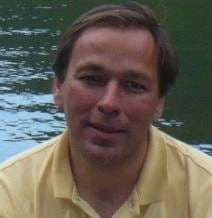Last week, Mali announced a national strategic plan to scale up Community Health Workers in every region of the country. This initiative has the potential to save tens of thousands of lives, including significantly reducing the risk of an Ebola epidemic.
How was this achieved? Roll back a few years and meet Djeneba, a young girl living in Yirimadjo. Today she goes to school but her life was once threatened. Djeneba started getting high fevers but her parents did not have enough money to pay for care. They tried to break the fever by bathing her in herbal remedies and buying unregulated pharmaceuticals but the fevers persisted and became increasingly severe.
Fortunately Djeneba lived in a community where Muso - a pilot health project featured in the Global Monitoring Report (GMR), was implemented. Sira, one of the community health workers trained by Muso became aware of Djeneba’s situation after one particularly nasty fever, and wrapped Djeneba in wet towels to stabilize her fever. She sent Djeneba by ambulance to a hospital in the capital city of Bamako where she was diagnosed with cerebral malaria and received comprehensive treatment. During the first 10 days of her stay in the hospital she was in a coma. But after three weeks she was released happy and healthy.
Djeneba's story is a bit extreme in that she needed to be sent right away to a hospital for urgent care. The vast majority of the children that Muso helps are not as badly sick, but this is because Muso intervenes early on, thereby reducing the need for costly treatment. The program is on the frontlines of providing timely, proactive health care to poor communities and hard-to-reach populations so that the lives of children like Djeneba can be saved. Research suggests that it works. Muso has received several international awards and a study in PLoS ONE documents a ten-fold difference in child mortality in the area of intervention three years after its launch.
For those interested, a more detailed account of the Muso story has been published on the Rotarian Economist blog, including how Muso works, how the pilot is being scaled up, and how the pilot has been funded (in part by Rotary). Let me summarize here the main features of the Muso model, the factors that have facilitated its scale-up, and why this is relevant for the fight against the Ebola epidemic.
Muso works in communities through a four-step approach. The first step consists of mobilizing the existing health care delivery system. This includes selecting, training, employing and supervising local individuals who go door-to-door and identify children sick with malaria and other illnesses. These community health workers diagnose malaria in the household and treat simple cases. The second step consists of removing barriers that prevent people from accessing care when needed. By eliminating point-of-care user fees, Muso ensures that even the poorest can benefit from life-saving comprehensive and universal care, whether at home, in community health centers, or in referral hospitals. The third step consists of creating rapid referral networks by training communities in identifying health risks, prioritizing rapid treatment, and navigating the health system. The final step consists of clinical capacity building. As Muso systematically removes access barriers to achieve universal health coverage, it reinforces the ability of the public sector to provide quality care to its patients.
Many pilot interventions in health are implemented without ever being scaled up, so that their benefits for a country’s population as a whole may be limited. This is not the case for Muso which has been working with the Ministry of Health for seven years now. Though this partnership, Muso has been able to provide technical assistance to help the Ministry develop a national plan for scaling-up of the community health worker model.
Four factors contributed to the success of this partnership and to last week’s scaling-up announcement by Mali’s Ministry of Health. First, Muso started its partnership with the Ministry of Health early on and it focused its intervention on the priorities of the Ministry. Second, the Ministry worked with several NGOs (including not only Muso but also Doctors without Borders) to test the paid, professionalized community health workers model, and this helped build confidence about the impact of the model. Third, several multilateral organizations provided support for the adoption and expansion of the model by the Ministry of Health. Finally, the partnership with the Ministry of Health was from the start conceived as a long-term collaboration, thereby building stronger relationships between policy makers and researchers.
How does all this relate to Ebola? Apart from their role in preventing and treating malaria and other common illnesses, community health workers are essential in the fight against Ebola. They are crucial because they tend to be trusted members of their communities. They can not only help in providing information about Ebola and promoting appropriate behaviors, but also in tracing and monitoring those who have been in contact with the virus. This must be done for at least 21 days - the period during which symptoms do not yet emerge, and it must be continued after that period if individuals become sick. In the other countries affected by the virus – including Guinea, Liberia, and Sierra Leone, community health workers already play that vital role.
According to Ari Johnson, the co-founder of Muso with Jessica Beckerman, “there is truly potential for community health workers to accelerate the effort to stop Ebola across West Africa by supporting epidemiologic surveillance, contact monitoring, returning traveler monitoring, community engagement, and prevention counseling.”


Join the Conversation